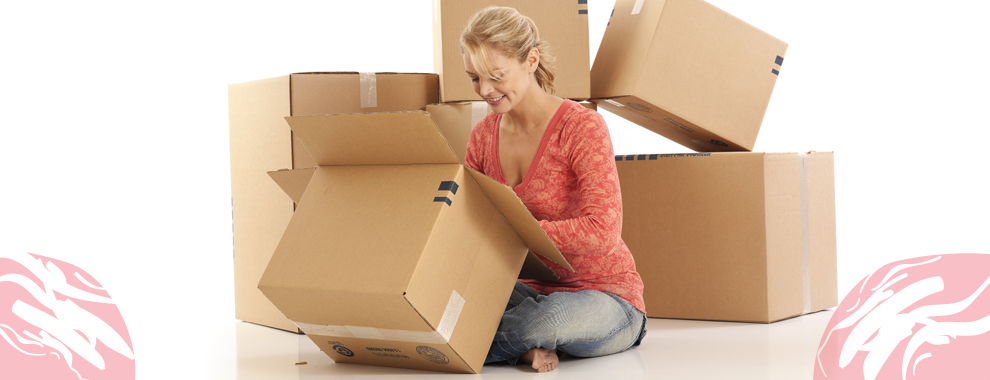Ensuring Your Freezer's Longevity with Proper Storage
Posted on 10/06/2025
Ensuring Your Freezer's Longevity with Proper Storage
Your freezer is a cornerstone of your kitchen, helping you preserve food, minimize waste, and save money. However, many homeowners overlook the importance of proper storage and maintenance. In this comprehensive guide, we'll explore how to extend your freezer's lifespan and ensure consistent performance through correct food storage practices, smart organization, and diligent care. Ready to make the most of your appliance? Let's dive in!
Why Proper Freezer Storage Matters
Proper storage doesn't just keep your food fresher for longer; it's a critical factor in maintaining your freezer's efficiency and increasing its durability. Poorly stored items can lead to frost buildup, inefficient airflow, and even mechanical issues over time. Here are several reasons why focusing on freezer longevity benefits you:
- Reduces energy consumption -- Efficient freezers use less electricity, leading to lower utility bills.
- Maintains food safety -- Organized storage prevents spoilage and freezer burn, so you enjoy better-tasting, safer meals.
- Avoids costly repairs and replacements -- Taking care of your freezer helps you avoid emergency breakdowns and extends its lifespan.
- Improves convenience -- Knowing what you have and where it is eliminates food waste and saves time.

Understanding Your Freezer: Types and Features
Before diving into best freezer storage practices, it's helpful to understand the types of freezers available and how their features impact storage strategies.
Chest vs. Upright Freezers
- Chest Freezers: Larger storage capacity, better for bulk items, but can be harder to organize and clean.
- Upright Freezers: Easier to access and organize, come with shelves and compartments, but may consume more energy and fit fewer large items.
Regardless of the type, both share common enemies: uneven temperature distribution, frost buildup, and overpacking.
Key Features to Look For
- Frost-free or manual defrost: Frost-free prevents ice buildup, reducing maintenance, but may slightly dry out food quicker. Manual defrost is quieter and can be more energy efficient, but requires periodic cleaning.
- Adjustable shelves: Allow for better organization and air circulation.
- Temperature controls: Essential for keeping food safely frozen and minimizing energy use.
Best Practices for Freezer Storage
Properly organizing your freezer is about maximizing storage without compromising performance. Here's how:
1. Avoid Overfilling
While a full freezer actually runs more efficiently than an empty one (frozen items help retain the cold), overpacking blocks airflow. This can cause uneven freezing, frost buildup, and overwork your freezer's compressor. Aim to keep your freezer about 75-85% full--enough to retain cold, but not so much that items are crammed together.
2. Use Freezer-Safe Containers
Store your food in airtight, freezer-safe bags or containers specifically designed for low temperatures. Avoid glass containers unless marked as freezer-safe to reduce the risk of cracking. Label all containers with dates and contents for easy management.
3. Keep Items Organized
Utilize baskets, stackable containers, and dividers to group items by type (meats, vegetables, prepared meals, desserts). This not only saves time but also minimizes the need to hold the door open while searching, which can result in unnecessary temperature fluctuations.
4. Wrap Items Properly
For long-term storage, wrap foods tightly to prevent freezer burn. Double-wrap meats, breads, and baked goods in plastic wrap before placing them in freezer bags. Remove as much air as possible from bags--a vacuum sealer is ideal for this purpose.
5. Cool Foods Before Freezing
Don't place hot foods directly into the freezer. Doing so can raise the internal temperature, risking partial thaw of items already stored inside. Let foods cool to room temperature before freezing to keep your freezer working efficiently.
Best Foods for Freezing (and What to Avoid)
Foods That Freeze Well
- Raw meats and seafood (well-wrapped and portioned)
- Breads (sliced for convenience), pastries, and pizza dough
- Soups, stews, and broths (in portion-sized containers)
- Vegetables (blanched to stop enzyme action)
- Fruits (washed, chopped, and portioned)
- Prepared meals (casseroles, lasagna, quiches, etc.)
Foods to Avoid Freezing
- Foods with high water content, like lettuce or cucumbers, become mushy upon thawing
- Soft cheeses (may become grainy)
- Cream-based sauces (can split or separate)
- Eggs in their shells (expand and crack)
- Carbonated beverages (can explode if frozen)
Organizational Tips for Optimal Freezer Longevity
A well-organized freezer reduces the stress on your appliance by promoting airflow and preventing excess frost. Consider these strategies:
Label and Date Everything
Use waterproof markers or freezer labels to write the food name and freezing date. This not only minimizes forgotten items but also helps you use older items before their quality declines.
Implement the First-In, First-Out Rule (FIFO)
Rotate older items to the front so they're used first, and place new items at the back or bottom. This reduces the risk of food waste and ensures nothing gets lost in your freezer's depths.
Use Bins and Dividers
Place bins by category--meats, veggies, ready meals--for easy access. Adjustable dividers keep loose items, like frozen fruits or ice packs, tidily separated.
Leave Room for Air Circulation
Avoid stacking items too high against the vents. Air needs to move freely inside the unit for it to cool effectively. If your freezer is overloaded, consider a quick reorganization every month.
Tips for Maintaining Your Freezer's Longevity
Regularly Defrost Manual Freezers
Frost buildup reduces storage space and efficiency. Most modern freezers have auto-defrost features, but manual-defrost models require you to unplug the unit and allow the ice to melt. Ideally, defrost if frost exceeds 1/4 inch (6 mm) thick.
Clean Gaskets and Seals
Dirty or damaged seals let cold air escape, making the compressor work harder--and shortening your freezer's lifespan. Inspect seals regularly, wipe with a damp cloth, and use a little petroleum jelly to keep them supple.
Check the Temperature
Set your freezer to 0?F (-18?C) for optimal storage and energy efficiency. Invest in a fridge/freezer thermometer for precise monitoring. Higher temperatures can speed food spoilage and force the motor to work overtime.
Vacuum Condenser Coils
Dusty coils reduce your freezer's efficiency. Twice a year, gently vacuum or brush the coils (usually at the back or beneath the freezer) to help the appliance dissipate heat more effectively. Unplug the unit before cleaning.
Leave Space Around the Freezer
Allow a few inches of space behind and beside your freezer for proper air circulation. Storing items on top of the unit is fine, but don't cover the vents or block the air intake.
Limit Door Opening
Every time you open the door, warm air enters and humidity rises, leading to frost buildup and energy loss. Decide what you need before opening the freezer--and shut the door promptly.
Freezer-Proofing for Power Outages
Unexpected blackouts can threaten your frozen foods and your freezer's longevity. Here's how to be prepared:
- Keep the door closed as much as possible during outages; a full freezer can maintain a safe temperature for up to 48 hours if unopened.
- Store jugs of water in empty spaces; frozen bottles help hold the cold during outages and support temperature stability.
- If the power is out for several hours, check for any thawing and cook those foods promptly.
Recognizing the Signs of Freezer Trouble
Early detection of issues allows you to take action before a problem worsens. Look out for:
- Unusual noises or increased compressor activity
- Not staying cold enough--frozen foods becoming soft or developing ice crystals quickly
- Frost buildup faster than normal
- Water leaking or pooling around the freezer
If you encounter these signs, consult your manual for troubleshooting tips or contact a qualified technician.

Environmentally Friendly Freezer Practices
Proper storage and organization extends your freezer's lifespan and reduces environmental impact. Freezers use significant energy to maintain low temperatures--maximize their efficiency by:
- Only freezing what you'll use--avoid overfilling with unnecessary items
- Regularly cleaning to ensure coils and vents are unobstructed
- Ensuring door seals are working to prevent energy waste
- Defrosting manual models to avoid excess ice buildup
These habits not only prolong your freezer's life but also minimize your household's carbon footprint.
Summary: Achieving Freezer Longevity with Smart Storage
Ensuring your freezer's longevity with proper storage is about more than just keeping food frozen. Optimal organization, regular cleaning, suitable containers, and smart maintenance habits work together to support efficient operation and extend the useful life of your appliance.
To recap, always:
- Keep your freezer organized with proper labeling and bins
- Use top-quality freezer-safe containers and double-wrap for long-term storage
- Maintain the right temperature and avoid overfilling
- Regularly clean, inspect, and defrost your appliance
- Monitor for early warning signs of trouble
By following these guidelines, you'll not only save money and enjoy fresher food--you'll also play your part in reducing energy waste and environmental impact. Happy freezing!









